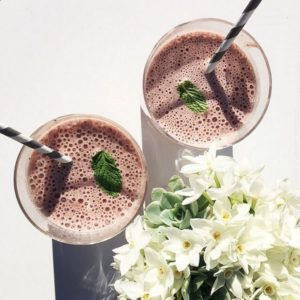So…almonds. Let’s think about what we know about almonds (or what we think we think we know about them):
Almonds are brown. They’re oval. They’re actually a little sweet (unless you hit a nasty-bad bitter one). They’re high in calcium and low in sat-fat. And when you soak and blitz ’em up with water, spices and your favorite sweetener, you make a delicious nutmil….
Check it: Did you know that technically speaking—botanically speaking—almonds aren’t nuts? Neither did we, and it stopped us in our cold-pressed juicing, nutmilk-loving tracks. And while we here at The Juice Standard probably won’t stop calling our fave silky-sweet plant-based  drink a nutmilk, in the name of vegucation, we wanted in on the skinny so we looked some stuff up.
drink a nutmilk, in the name of vegucation, we wanted in on the skinny so we looked some stuff up.
According to Amy Stewart’s The Drunken Botanist, The Plants That Create The World’s Drinks (2013, Algonquin Books of Chapel Hill), “From a botanical perspective, a nut is a fruit with a dry, hard shell. An almond is a drupe, or a stone fruit whose pit surrounds a fleshy seed,” kinda like peaches. But, Stewart continues, “Unlike peaches, apricots, and other drupes, the almond’s ‘fruit’ is nothing more than an unappetizing leathery outer membrane.”
Huh.
So the reality is that all nuts are actually dried fruits that don’t open at maturity to release their seeds. And almonds, in particular, are closely related to peaches and apricots, and likely share an Asian heritage with them (trees were grown in China some 12,000 years ago before heading to Greece by about the 5th century BC).
Thankfully, whether almonds are a fruit, a nut or a seed, all this backstory does nothing to change our knowledge about how healthy these babies are for us…especially when we eat ones that are organic.
So if you see almonds on The Juice Standard’s ingredients list (or any ingredients list), know that they’re incredibly good for you, for a kajillion reasons. And if you happen to be at a trivia night where you’re faced with the Is-An-Almond-A-Nut-Or-Not question…you’re welcome.

